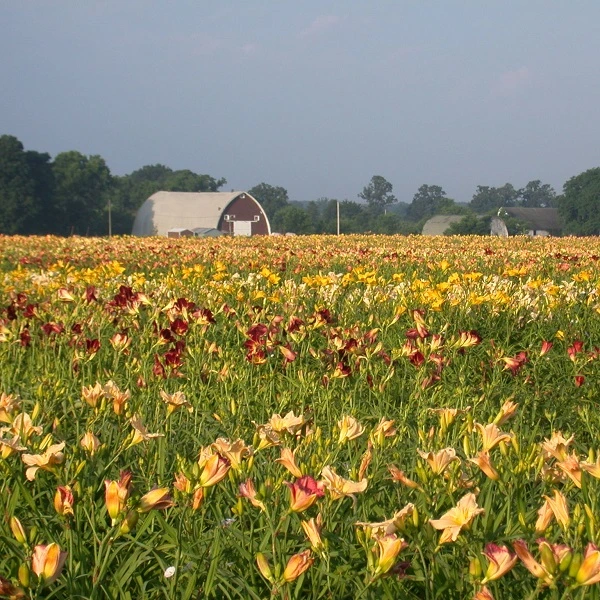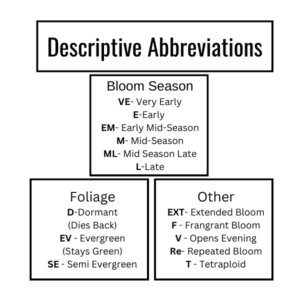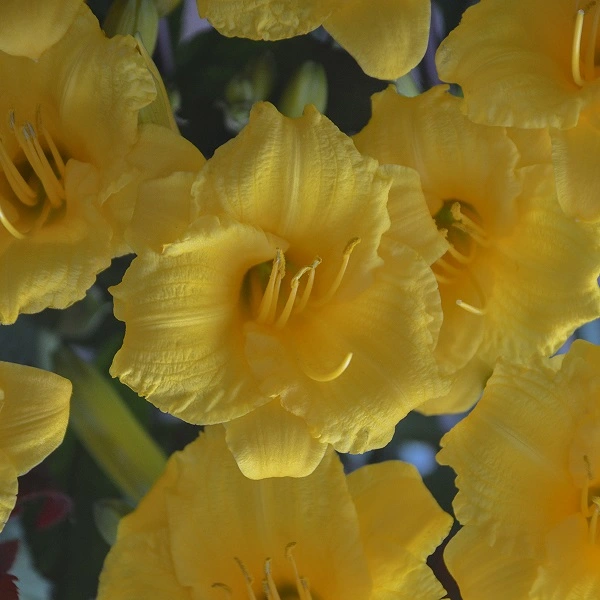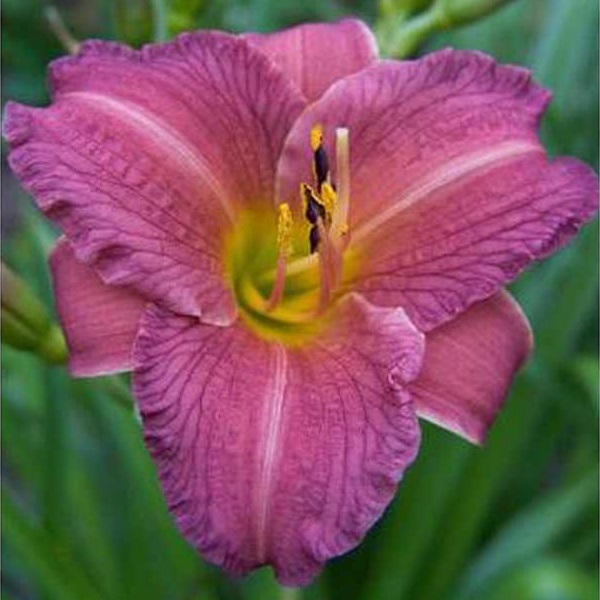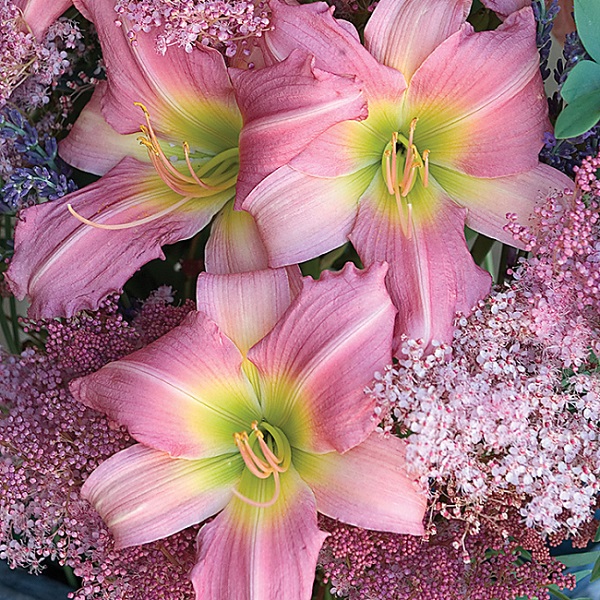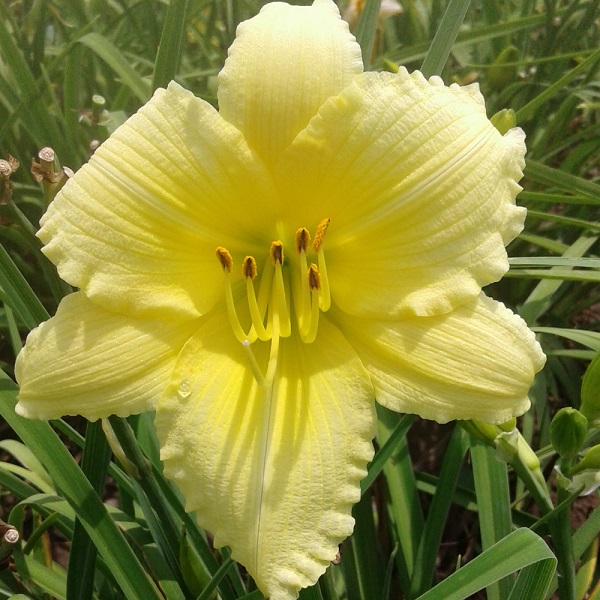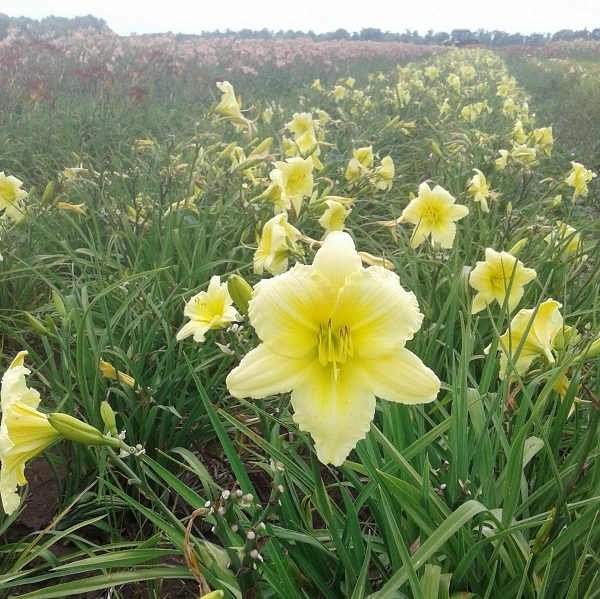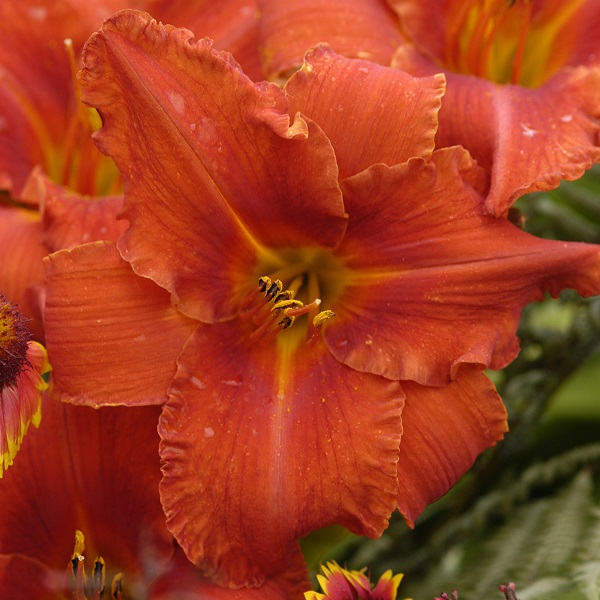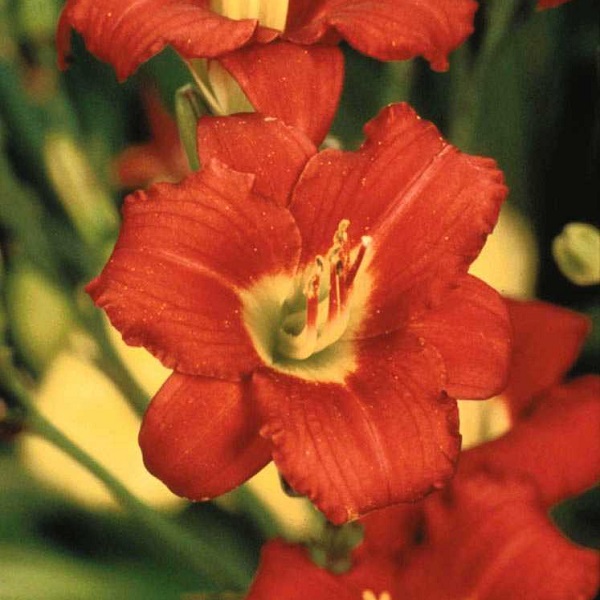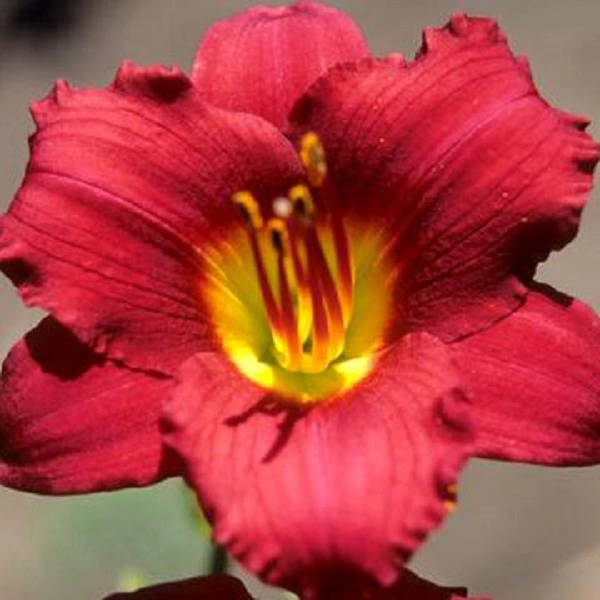WHAT IS A DAYLILY
The daylily is a member of the lily family as are such other plants as onions and hyacinths, but it is not a lily. Its botanical name is HEMEROCALLIS, derived from two Greek words meaning “beauty” and “day”. Individual blooms are generally open for only a day, but there are successive flowers for a number of days during the blooming season.
The daylily is a fibrous-rooted, hardy, herbaceous perennial. Roots are finger-like in appearance, varying in size from tiny and threadlike to large, rounded, fleshy. There is a crown at the junction where the roots and leaves join. The foliage is narrow and long, and grows more or less in the shape of a fan.
WHERE TO PLANT
Most daylilies bloom best in full sun. They will tolerate part shade conditions, but require a minimum of six hours of direct sun per day. Many red and purple varieties benefit from partial shade in the hottest part of the day since dark colors absorb heat and do not withstand the sun as well as lighter colors. Pink daylilies need to be planted in full sun to obtain their beautiful pink coloring. Any good garden soil is appropriate for growing daylilies. Humus or peat moss and sand should be added to heavy clay soil.
Compost must be incorporated into sandy soil to lessen its porousness and to increase water retention.
Daylilies should be planted in well drained soil. One method of achieving adequate drainage in problem areas is to prepare raised beds, 3-6 inches above ground level.
Daylilies do not grow well near broad leafed tree, such as oaks, since the tree roots rob the soil of moisture and nutrients. Daylilies do perform admirably near and under pine trees. The daylilies benefit from the dappled shade offered by the pines and are not denied proper moisture and nutrients, since the pine root system is deep in the soil.
WHEN TO PLANT
Anytime is the best time to plant daylilies, provided you get them in the ground 6-8 weeks before severe freezes. If winters are severe, plant evergreens only in the spring or summer so that they can become well established before winter. Cut off winter damage foliage early in the spring before new growth begins.
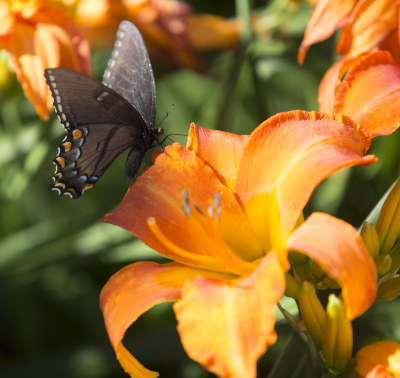
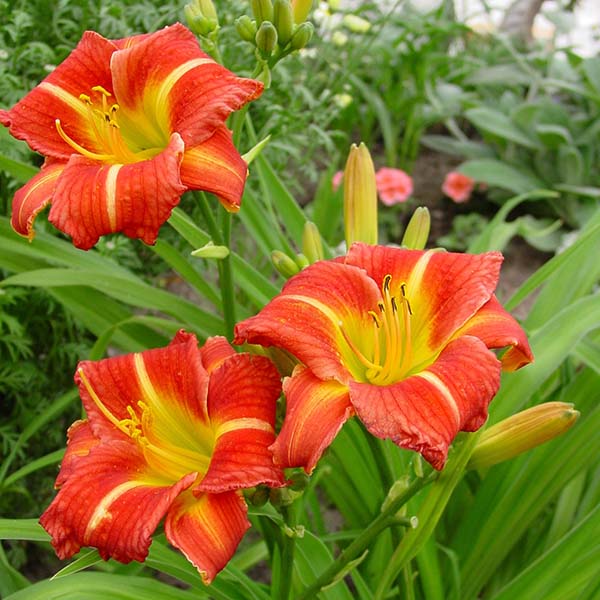
HOW TO PLANT
If you cannot plant immediately after receiving a shipment of daylilies, place your plants in cool location; keep moss damp; stand plants upright, or cover their roots with sand in shady place. This will keep them safe for a few days. BEFORE PLANTING, soak plants in water for 4-6 hours, having added a little liquid fertilizer in the water.
The soil where you plan to plant your daylilies should be worked into a good loose condition to a depth of at least a foot. Incorporate in the hole a mixture of compost, good garden soil, peat moss, sand or well rotted manure (whatever is available for a good loose growing medium). Make a mound in the center of the hole. Set the plant in place with the roots spread on each side of the mound.
You should not plant the crown (the point where foliage and root join), more than one inch below the surface of the soil. Work the soil around and between the roots as you cover the plant. Firm the soil and water well. Make sure there are no air pockets. Daylilies should be spaced between 18 inches and two feet apart on each side. Some varieties multiply very fast, and your clumps will become crowded if planted too close to each other.
FOLIAGE GROWTH
Daylilies have three types of foliage habit:
DORMANT – these daylilies lose their foliage leaves completely in winter.
EVERGREEN – these daylilies retain their green foliage throughout the year, unless there is severe weather (freezing for several days in a row).
SEMI-EVERGREEN – some lose part or most of their foliage in the winter.
As a general rule, many evergreens will not grow in cold climates and many dormant will not perform well in the hottest climates. There are always exceptions to the rule.
WINTER PROTECTION
Evergreen type daylilies should be mulched in the northern states for protection against winter weather. In mulching “nestle” the loose, non-sogging mulching material, rather than smothering.
Daylilies set in the late fall should be mulched. We do not recommend the evergreen type daylily for the northern regions as they winterkill so very easily. They can be grown in the north if you wish to mulch them each winter.
GENERAL GARDEN CARE
Remove wilted flowers daily for a neat garden unless you wish to have the plants set seeds for your hybridizing program. The removal of the wilted flowers is not necessary as they fall from the plant in a day or two. Through the hottest part of the summer, water daylilies heavily to increase size of flowers and to give good color in the flowers. In the spring do not remove the dead foliage from the daylily until all dangers of late frost are gone. These dead leaves are nature’s way of mulching and protecting the daylily plants from the extreme cold. The arching leaves or foliage of the daylilies shade the soil during the hot summer months. The most important key to success is moisture. We like to be sure they never wilt so they keep growing.
This information has been taken from the handbook “DAYLILIES – EVERYTHING YOU’VE ALWAYS WANTED TO KNOW ABOUT DAYLILIES” published by the American Hemerocallis Society.

